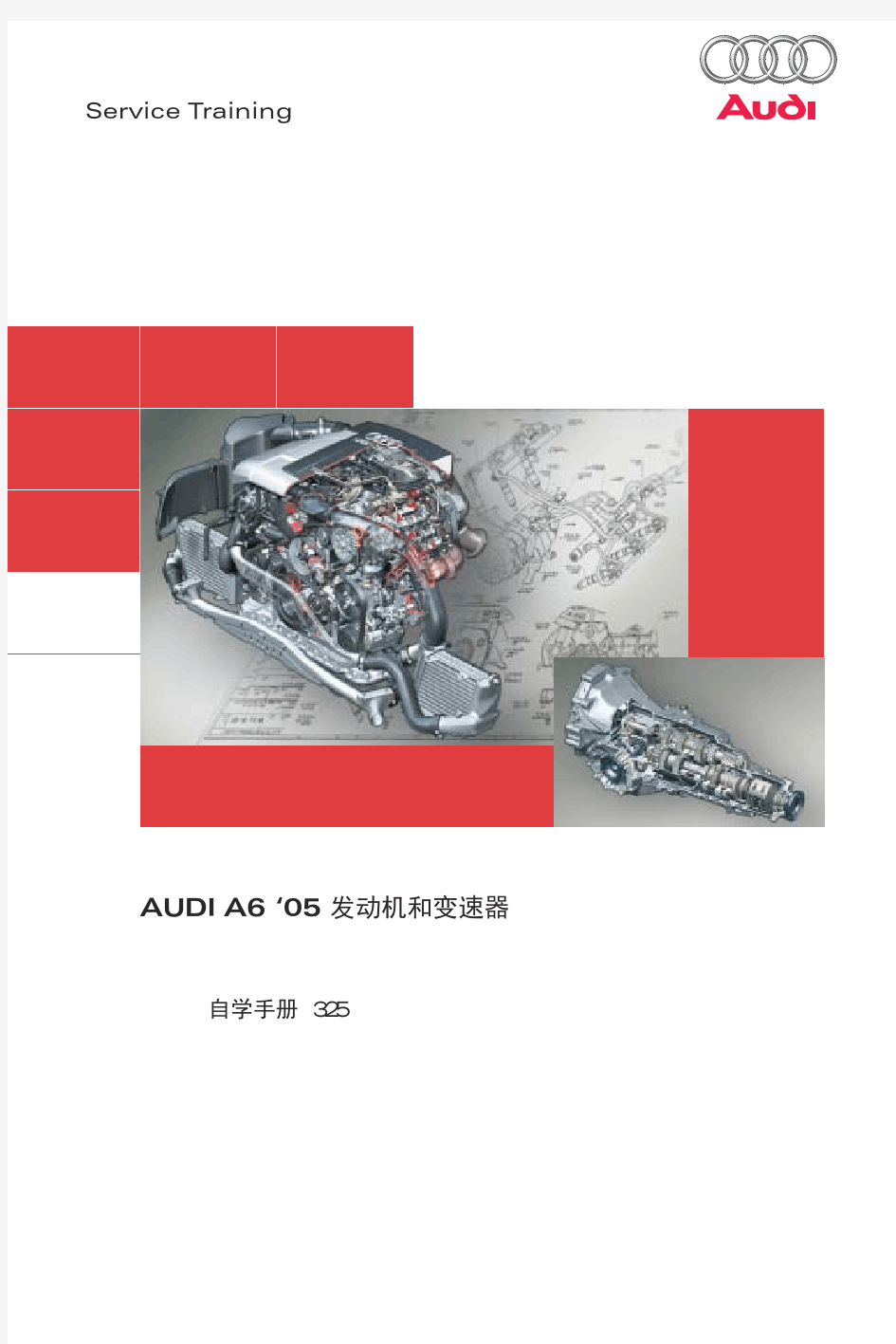奥迪A6L自学手册


奥迪全系自学手册(SSP):A1.1_Wurms_Audi
Innovative Technologies in Current and Future TFSI Engines from Audi Dr. Rainer Wurms, Michael Jung, Dr. Stephan Adam, Dr. Stefan Dengler, Dr. Thomas Heiduk, Axel Eiser AUDI AG, Ingolstadt Summary Over the last 7 years the turbocharged direct-injection SI engine – designated TFSI by Audi – has successfully penetrated the market for passenger car SI engines. Thanks to its many significant advantages, TFSI technology will replace most other SI engine concepts in the near future, just as TDI technology did in the past. As the pioneer and technology leader in TFSI, Audi has continually enhanced its TFSI technology since its first production fitting of a direct turbocharged engine in Europe and NAR in 2004. In 2011 Audi launched what is already its third generation of four-cylinder inline TFSI engines onto the market. Once again, this third generation incorporates many innovative technologies applied to an SI engine for the first time anywhere in the world. In addition to the Audi Valvelift System, for the first time the engine has a cylinder head with integrated exhaust manifold and complete cylinder firing sequence separation, an electric wastegate actuator, an innovative thermal management system and a completely new mixture preparation system in order to comply with future exhaust emission standards. The presentation details the design and working principle of the new technologies in the third generation TFSI engine. It also looks ahead to potential further technology advances for future SI engines. 1 Introduction Exhaust gas turbocharging has a long-standing tradition at Audi. Since the initial launch of a turbocharged petrol engine in 1979, Audi has been continually advancing its turbocharger technology. There were two outstanding events, however, which dictated the future of Audi engines – and ultimately then also of petrol engines in general. Whereas in the period from 1979 to 1995 Audi turbocharged engines were deployed only in specialist sports designs and in a few high-end applications, the launch of the four-cylinder inline 1.8l 5VT in 1995 marked the breakthrough for the turbocharged engine as a widely accepted standard power unit for passenger cars. The introduction of TFSI technology in 2004 then saw the beginning of a new era in petrol engine technology.
奥迪自学手册ssp436
Service Training 4-cylinder TFSI engine Self-Study Programme 436
The 1.8-litre chain-driven 4V TFSI engine was the ?rst engine of its kind when it was launched in 2006. This new 4-cylinder engine generation (EA888) is gradually replacing the timing belt-driven 4-cylinder engine generation, now being phased out. The engine ?rst appeared on the Audi A3 as a transverse unit. This so-called "Stage 0" engine was developed with emphasis on the following development goals: –Enhanced fuel economy –Reduced exhaust emissions and compliance with future exhaust emission standards –Extended performance range –Longitudinal installation of the engine For a detailed technical description of the "Stage 0" engine, please refer to Self-Study Programme 384, "Audi 1.8-litre chain-driven 4V TFSI engine". Stage 2 has now been implemented. A table summarising the various modi?cations is included in this Self-Study Programme. The modi?cations relevant to service centres are described below. A key milestone for Audi was the launch of the engine on the North American market, where the world's most stringent exhaust emission standards (ULEV II and SULEV) apply. To meet these limits, further technical modi?cations were called for. You will also ?nd a description of these modi?cations in this Self-Study Programme. 436_024 Illustrations on page 1 Large picture: longitudinal 1.8l TFSI engine Small picture: longitudinal cylinder head of the 2.0l TFSI engine
奥迪自学手册中文版:ssp406底盘调整
Service Training Selbststudienprogramm 406 Die Adaptive Fahrwerksregelung DCC Konstruktion und Funktion
2 Neben der D?mpfung wird auch die Lenkunterstüt- zung angepasst. Die Adaptive Fahrwerksregelung DCC setzt erstmalig bei Volkswagen im Passat CC ein. Wie die Adaptive Fahrwerksregelung DCC im Einzel- nen funktioniert, erfahren Sie in diesem Selbststudien- programm. Das Selbststudienprogramm stellt die Konstruktion und Funktion von Neuentwicklungen dar! Die Inhalte werden nicht aktualisiert. Aktuelle Prüf-, Einstell- und Reparaturanweisungen entnehmen Sie bitte der dafür vorgesehenen KD-Literatur. NEU Achtung Hinweis S406_002 Beim Fahrwerk gilt noch immer: Ein spürbares Plus an Sportlichkeit geht zu Lasten des Komforts. Mit dem neuen System – Die Adaptive Fahrwerks- regelung DCC – passt sich das Fahrwerk permanent den Fahrbahnbedingungen, der Fahrsituation und dem Wunsch des Fahrers an. Um das zu erm?glichen, braucht man verstellbare D?mpfer.
Audi Q7自学手册1
Service Training
Audi Q7
Self-study programme 361
The Audi Q7
In superior fashion, the Audi Q7 combines sportiness and versatility, advanced technology and premium-class luxury. On the road, it excels with the driving performance and dynamics of a sports car, while redefining the possibilities of its class off-road. A vehicle which visually display all its qualities and meets its promise in technological terms, on any road and under any conditions. Audi Q7 – the high-performance SUV from the creator of quattro. The very design of the Audi Q7 sets new standards. Characteristic of the typical Audi dynamism are the swooping curve of the roofline and the distinctive relationship between the high waistline and narrow window area. The dynamic sweep of the front section and the powerful rear with the sharply sloping Dpillars provide a coupe-like profile. Equally characteristic elements of the current Audi styling are the shoulder line and dynamic line which define the side section.
361_000
Taking the lead: With design & performance
